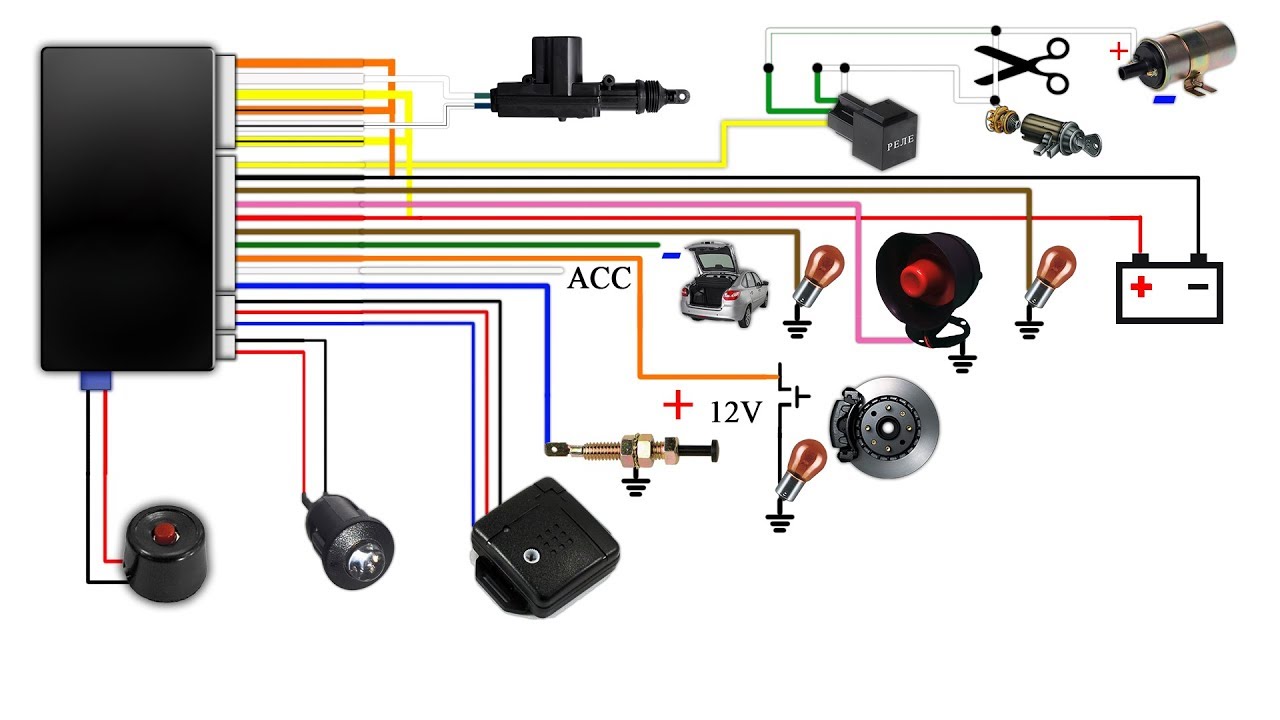
How to install a car alarm
Content
Whether you've just bought a used car without an alarm, or just opting for some extra security, installing an alarm system in your car is never a bad idea. There are a number of practical benefits, and in some areas, adding an alarm system can reduce the cost of car insurance.
Car alarms are fantastic car theft protection and there are a number of alarms available that anyone can simply install in their car. Although this process is not as simple as changing the oil, installation is surprisingly easy if you follow the following directions carefully, double-checking as you go.
Part 1 of 4: Choose an aftermarket alarm
There are various degrees of complexity of car alarms. Basic systems can detect if a door is open or if an automatic lock has been tampered with. Sophisticated systems have remote controls that can alert you when your car is being tampered with and can tell when the car has been hit. Try to find an alarm designed for your car to make the installation process easier.
Step 1: Find the Factory Alarm. Check if there is a factory alarm for your specific car model. Most manufacturers offer an alarm as an option, and in some cases, installing a factory device can be incredibly easy. The dealer may need some reprogramming of the computer on some units to enable it.
- FunctionsA: You can usually get a key fob with a "panic" button from the manufacturer that matches the car's stock key.
Step 2: Decide what you need from your alarm system. It is important that you have an idea of what you want from your intruder alarm system and search based on those preferences. If you just want a simple system, you can set it up at little cost. If you want a remote control that will alert you when an alarm goes off and the ability to remotely start or stop the engine, then you can spend a lot more on an advanced system.
- AttentionA: Your price range will be the most important deciding factor, so weigh the pros and cons of installing an alarm system before deciding what level of security you require. Very complex alarm systems may require professional installation.
Step 3: Read the manual. Once you have selected an alarm system, you will need to read the alarm system manual and all relevant sections of the vehicle owner's manual.
It is important to plan the entire installation before diving into the project. An alarm that doesn't work properly isn't very helpful and potentially extremely annoying. Disconnect the battery before starting installation. Be aware of any airbag wiring, usually enclosed in yellow covers and connectors. Do not connect wires to any airbag circuit.
Part 2 of 4: Siren Installation
Necessary materials
- electrical tape
- Hand drill
- multimeter
- Mechanical gloves
- Soldering iron or crimping tool
- Wire stripping tool/cutter
Ties
Attention: When purchasing an alarm system, check the manual to see what additional tools may be required for installation.
Step 1: Where to mount. Find a metal surface on which to mount a siren leading to an alarm system. The siren is the part that actually makes the high-pitched sound, so it should be in the engine bay and out of the way. Try to keep the siren 18 inches away from hot engine components such as the exhaust manifold or turbocharger, pointing the siren down to prevent water from entering the part.
Step 2: Locate the Wire Hole. The wire must pass through the firewall separating the engine from the vehicle interior. This means either finding an existing hole that the wires already run through and using that space, or drilling a hole in the plastic or rubber part of the firewall. This hole will also allow the power line to pass from the battery to the "brain" of the alarm system, powering it. It is recommended to connect a fuse to this line.
- A warning: Do not drill through firewall metal unless absolutely necessary. You risk damaging critical components and causing premature corrosion.
Part 3 of 4: Connect the alarm to the car
Step 1. Find the connection point of the alarm computer. Using the manual that came with the alarm, determine where the "brain" of the system will be located.
Most of them need to be connected to the car's ECU in order to read the signals related to the sensors in the doors and windows. Some alarms have their own stand-alone computer units that are installed in the engine bay next to the siren, but most are connected to the car's computer and hidden inside the dashboard.
- Attention: Common areas include under the dashboard on the driver's side and behind the glove box.
Step 2: Install Additional Sensors. If the alarm was supplied with some additional sensors, such as a shock sensor, now they can be installed where the manufacturer offers.
Step 3: Plan a place for LED lights. Most alarm systems are equipped with some sort of indicator to let the driver know when the system is active. Usually this indicator is a small LED that is mounted somewhere on the dash, so plan where the LED will fit best.
Step 4: Install LED Lights. Once you have determined a suitable location, drill a small hole and secure the fixture in place by connecting it to the rest of the system.
Part 4 of 4: Connect the battery and check the alarm
Step 1: Check the power. Connect the power line to the battery and let the alarm system turn on. The system should turn on when the car is turned on.
- A warningNote: Some systems may require additional calibration at this stage, so be sure to read the manual that came with your system before proceeding.
Step 2: Check the system. Prepare your system and then test it to make sure it is working properly. If your system comes with a "panic button" remote control, check it with it, but your system does not have a remote control, try pushing the door when the alarm is on.
Step 3: Tie Loose Wires. If the system is working properly, you can use electrical tape, zip ties, and/or shrink wrap to tie loose wires together and secure the connections.
Step 4: Fix the wires. Since the wires are now tied together, secure the brain and wires somewhere inside the dashboard. This will prevent a collision with the device, which could cause the alarm to go off unnecessarily, causing unwanted distress and anxiety.
Once the system is secured, the chances of your vehicle being stolen will be greatly reduced by the measures you take. Installing a car alarm is a painless way to keep your car safe from criminals, giving you the peace of mind and comfort you need to know your car is safe. Car alarms can seem intimidating, especially for a newbie, but you shouldn't let that stop you from setting up an alarm and protecting yourself and your car.
